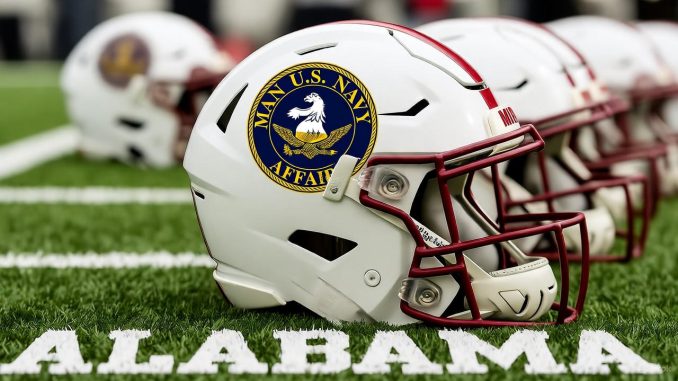
TUSCALOOSA, Ala. — The University of Alabama announced earlier today that it has finalized an unprecedented on-field sponsorship agreement with the United States Navy’s “Make It Bold” (MIB) recruiting initiative marking the first time a corporate or governmental logo will appear directly on the playing surface of Bryant–Denny Stadium.
The multi-year partnership, branded under the campaign “Build Giants Alabama,” represents a striking fusion of two of America’s most respected institutions: Alabama football and the U.S. Navy. The deal, confirmed by university officials and the Department of Defense, will integrate Navy insignia and branding elements into the stadium environment, team programming, and community outreach — all designed to promote leadership, discipline, and national service.
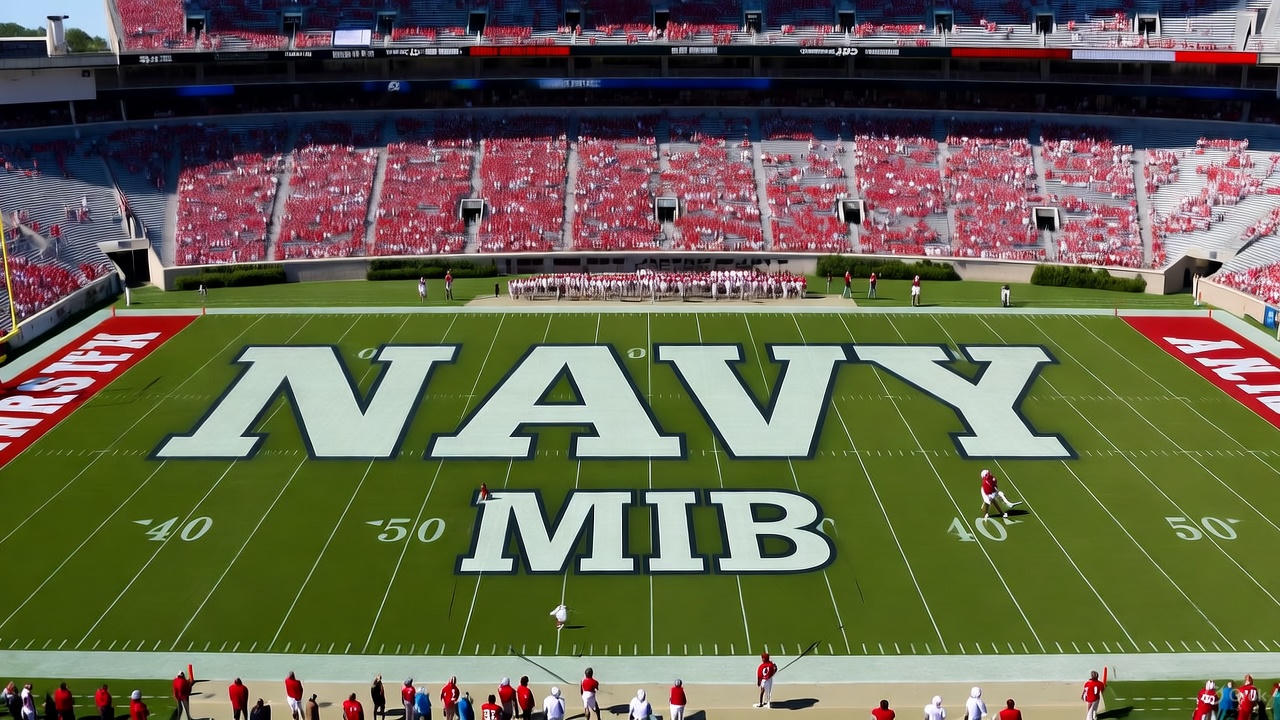
A First in Crimson Tide History
Beginning with the 2026 football season, the Navy’s gold-and-blue “MIB” emblem will appear on each 25-yard line at Bryant–Denny Stadium, along with sideline signage and limited co-branding on digital scoreboards.
While Alabama has long resisted on-field sponsorships to preserve the sanctity of its football tradition, athletic director Greg Byrne described the partnership as “mission-driven rather than commercial.”
“This is not just about sponsorship,” Byrne said during a press conference inside the Mal M. Moore Athletic Facility. “It’s about partnership. The Navy and Alabama share the same values — discipline, excellence, service, and leadership. ‘Build Giants Alabama’ captures what we both stand for: developing young people who will make an impact far beyond the field.”
Byrne emphasized that no corporate product logos will appear on the turf — only the Navy’s MIB insignia, accompanied by a commemorative “Build Giants” mark.
A Vision Backed by Tradition and Purpose
The agreement reportedly includes a seven-figure annual contribution to Alabama’s athletic department, with portions earmarked for veterans’ scholarships, STEM programs, and leadership training initiatives for student-athletes.
Rear Admiral James Callahan, who oversees the Navy’s national recruiting programs, said the decision to partner with Alabama was both strategic and symbolic.
“Alabama football is synonymous with excellence and teamwork exactly the kind of qualities we want future sailors and officers to embody,” Callahan said. “When we say ‘Build Giants,’ we mean building leaders. The University of Alabama represents a cultural crossroads where patriotism, ambition, and achievement converge.”
The Navy’s “Make It Bold” campaign, launched nationally in 2024, aims to modernize the military’s recruiting image by aligning with influential sports brands, universities, and entertainment platforms. The Alabama deal marks the program’s most visible collaboration to date.
DeBoer’s Legacy Meets a New Chapter
The move comes amid growing speculation about the twilight of DeBoer’s coaching career, but the legendary coach who was consulted during negotiations endorsed the partnership wholeheartedly.
“Discipline, respect, and service are the foundation of our program,” DeBoer said in a prepared statement. “Those same principles define the Navy. This partnership sends a powerful message to our players: greatness comes from purpose. Whether you’re serving your team or your country, the values are the same.”
The deal also reflects how college football is evolving in the era of Name, Image, and Likeness (NIL) and expanding financial pressures. With conference realignments and escalating athletic budgets, even traditional powerhouses like Alabama are exploring new ways to generate sustainable revenue while maintaining their brand integrity.
Sports economist Dr. Jason Marlow of Auburn University called the deal “a watershed moment.”
“This isn’t just about advertising it’s a cultural statement,” Marlow said. “It opens the door for universities to partner with mission-based organizations in ways that enhance both financial stability and institutional identity. If done right, it can elevate the college experience rather than cheapen it.”
Fans Divided but Intrigued
Reaction among Alabama fans was swift — and mixed. Many praised the partnership as a respectful collaboration that honors service and national pride.
“I love it,” said former Alabama linebacker Rashad Evans. “Football and the military share the same DNA discipline, sacrifice, and unity. Seeing the Navy on our field just feels right.”
Others, however, expressed concern that the move might erode the purity of college football’s traditions.
“I never thought I’d see a logo on Saban Field,” said longtime season ticket holder Margaret Johnson. “I respect the Navy, but I hope this doesn’t turn into corporate billboards all over the place.”
University officials stressed that Alabama remains committed to preserving the aesthetics and tradition of Bryant–Denny Stadium. “This will be tasteful, dignified, and aligned with who we are,” Byrne reassured reporters.
A Broader Shift in College Sports
The “Build Giants Alabama” partnership arrives amid a national conversation about the commercialization of college sports. As programs grapple with NIL payments, expanded playoffs, and conference revenue disparities, sponsorships once considered unthinkable are rapidly becoming mainstream.
Still, the symbolism of this deal linking a powerhouse football brand with America’s naval service — carries deeper resonance. It reflects not only the modernization of college athletics but also a conscious attempt to use sport as a platform for shared values.
Rear Admiral Callahan summarized it simply:
“We want young Americans to see that greatness comes from service to your team, your family, and your country. Alabama football has always embodied that idea. Now, together, we’ll build something even bigger.”
When the Navy’s gold-and-blue insignia takes its place on Saban Field next fall, it will mark more than just a sponsorship milestone. It will stand as a symbol of how two giants — one athletic, one national — found common cause in shaping the next generation of leaders.
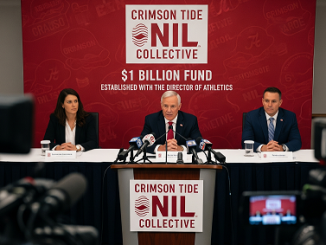
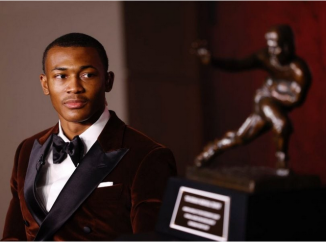
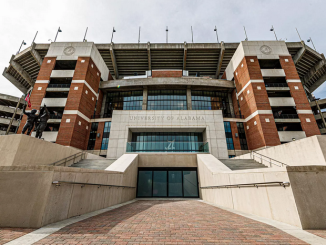
Be the first to comment